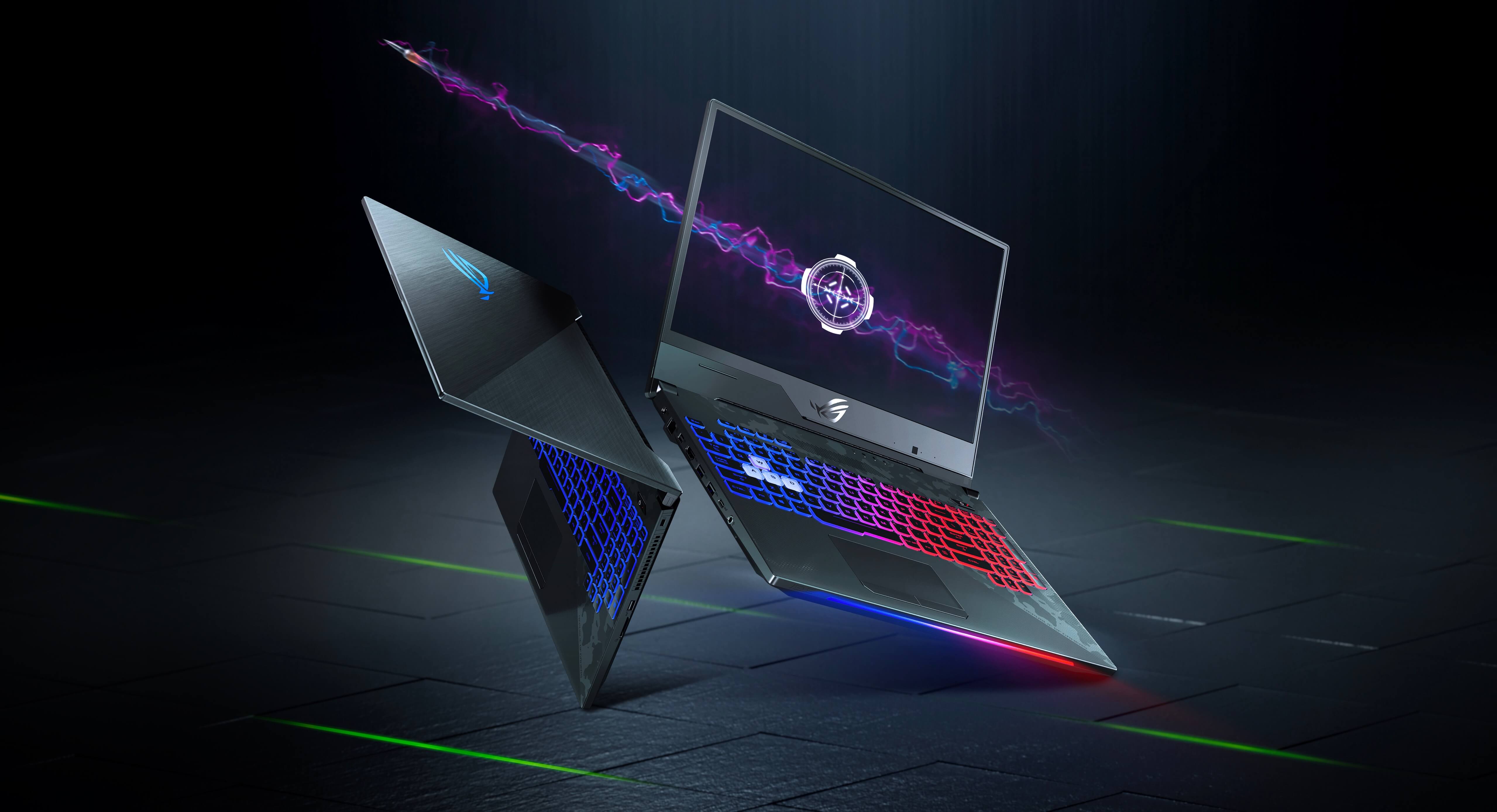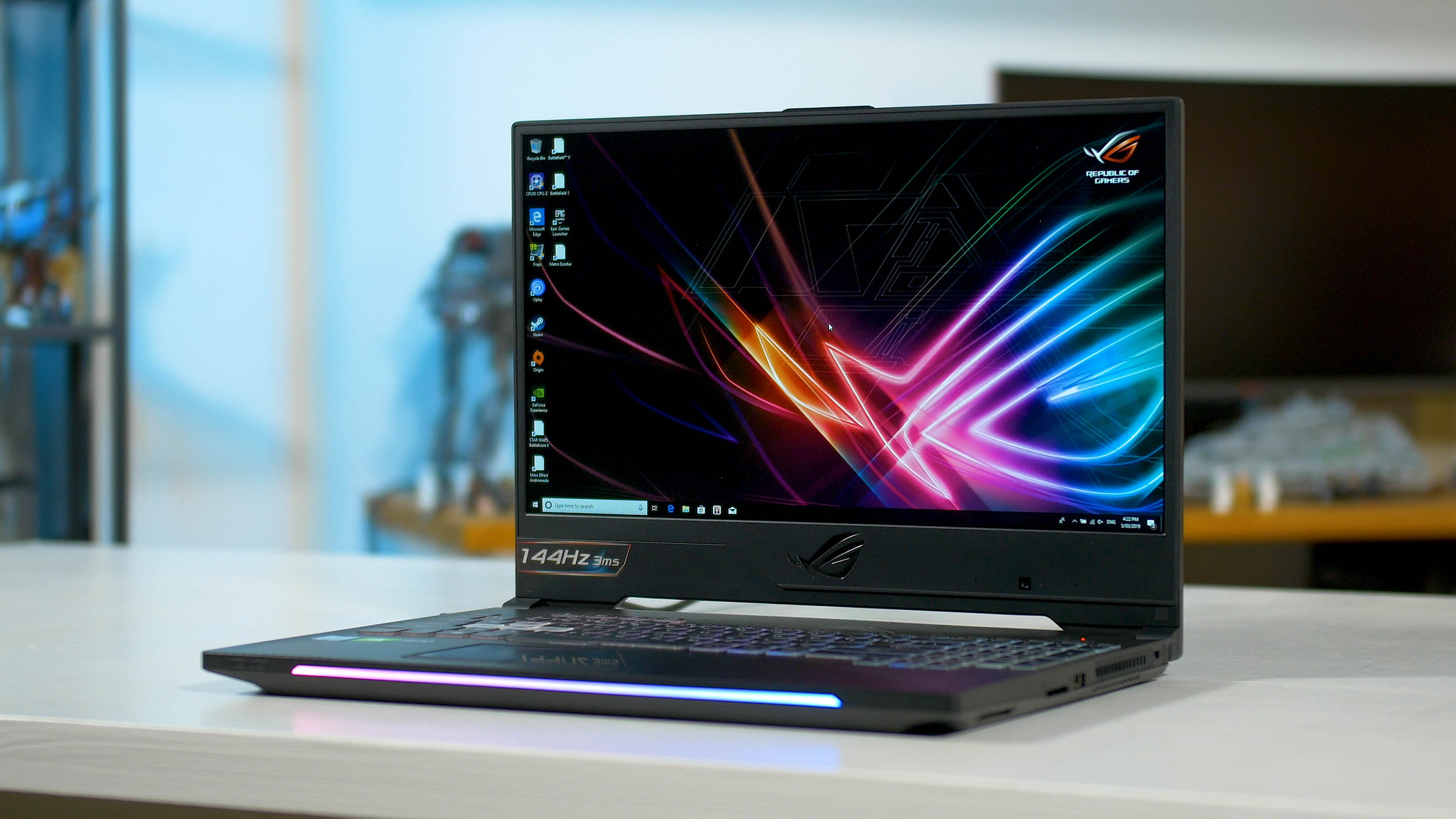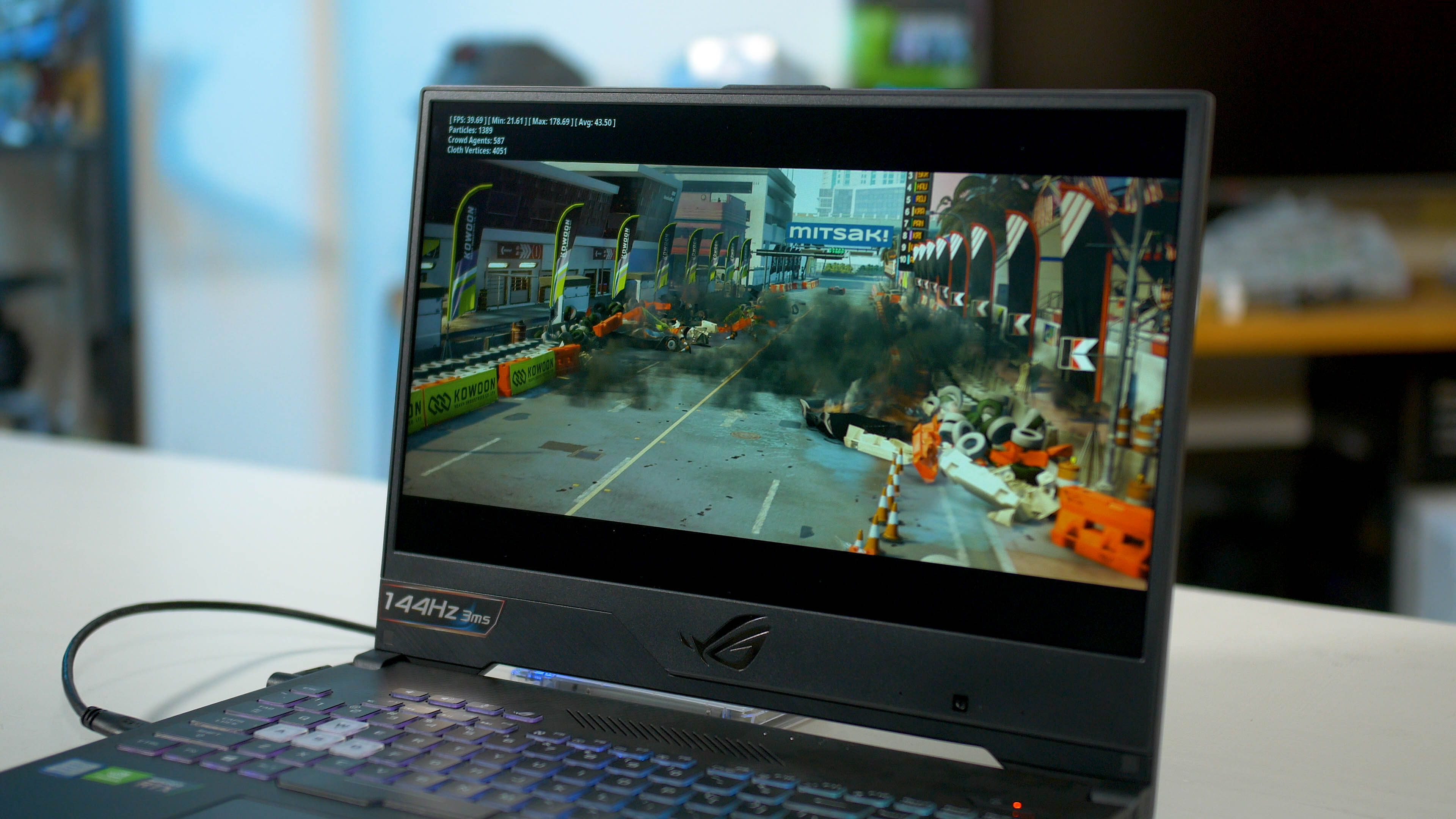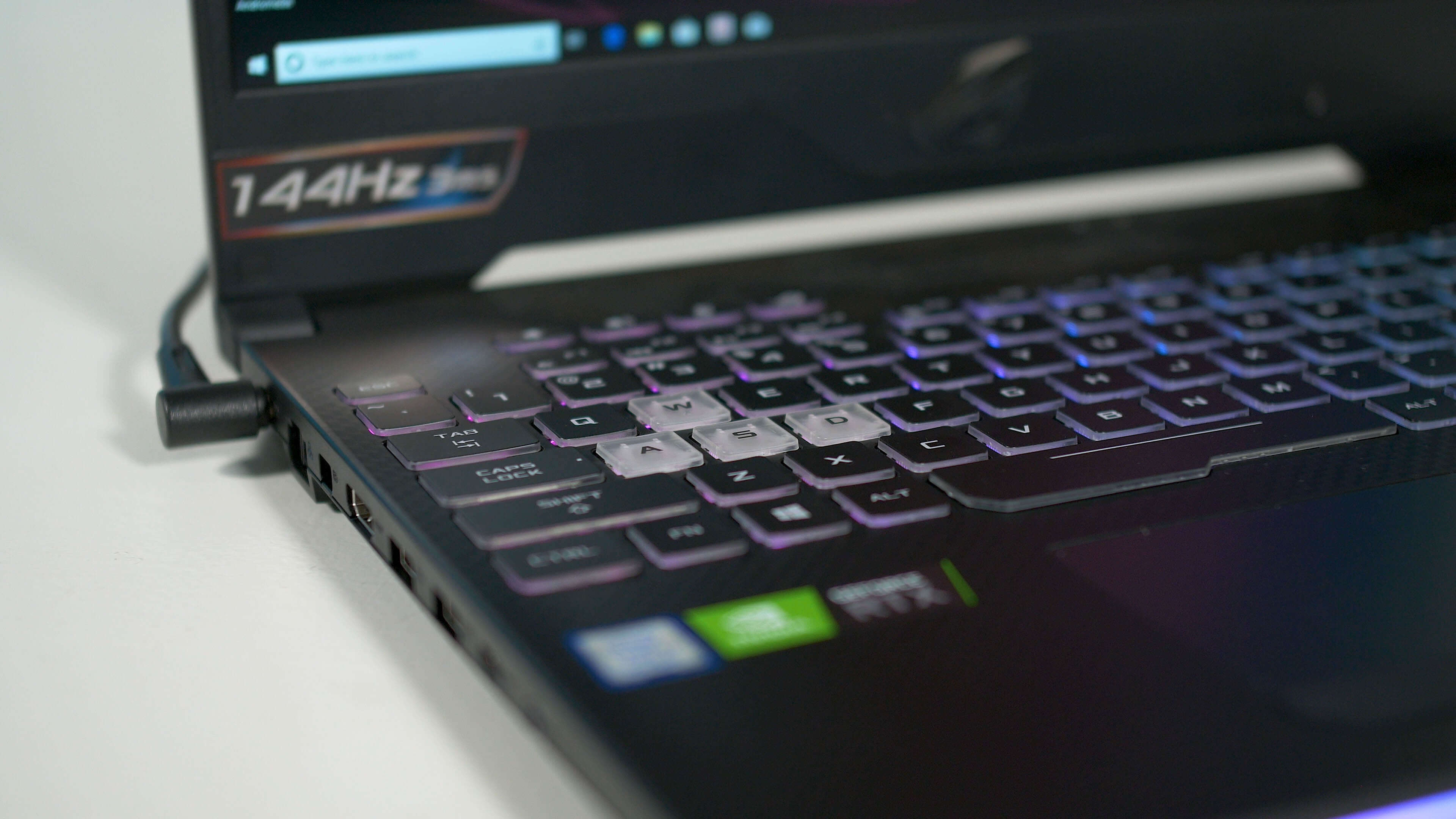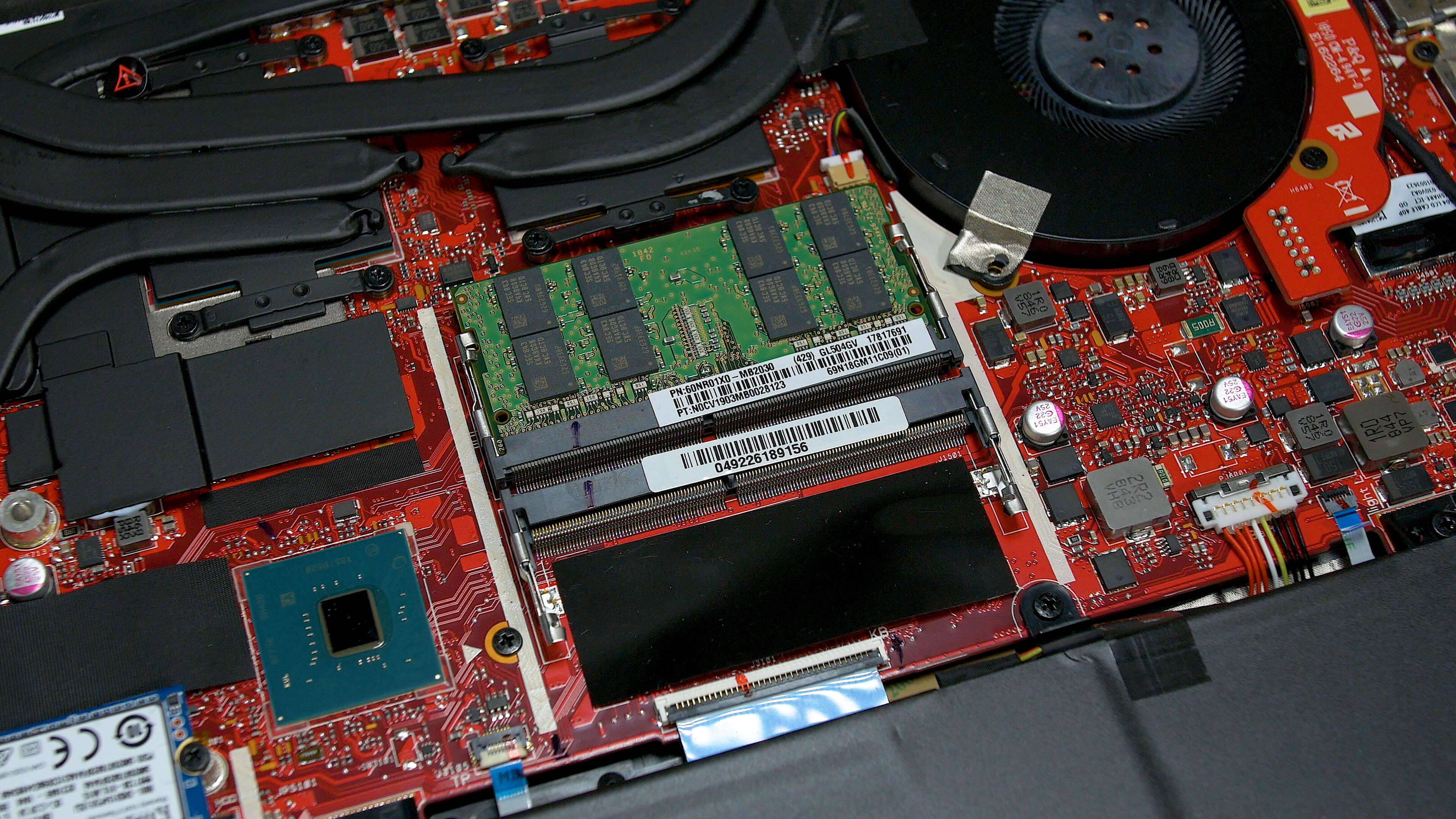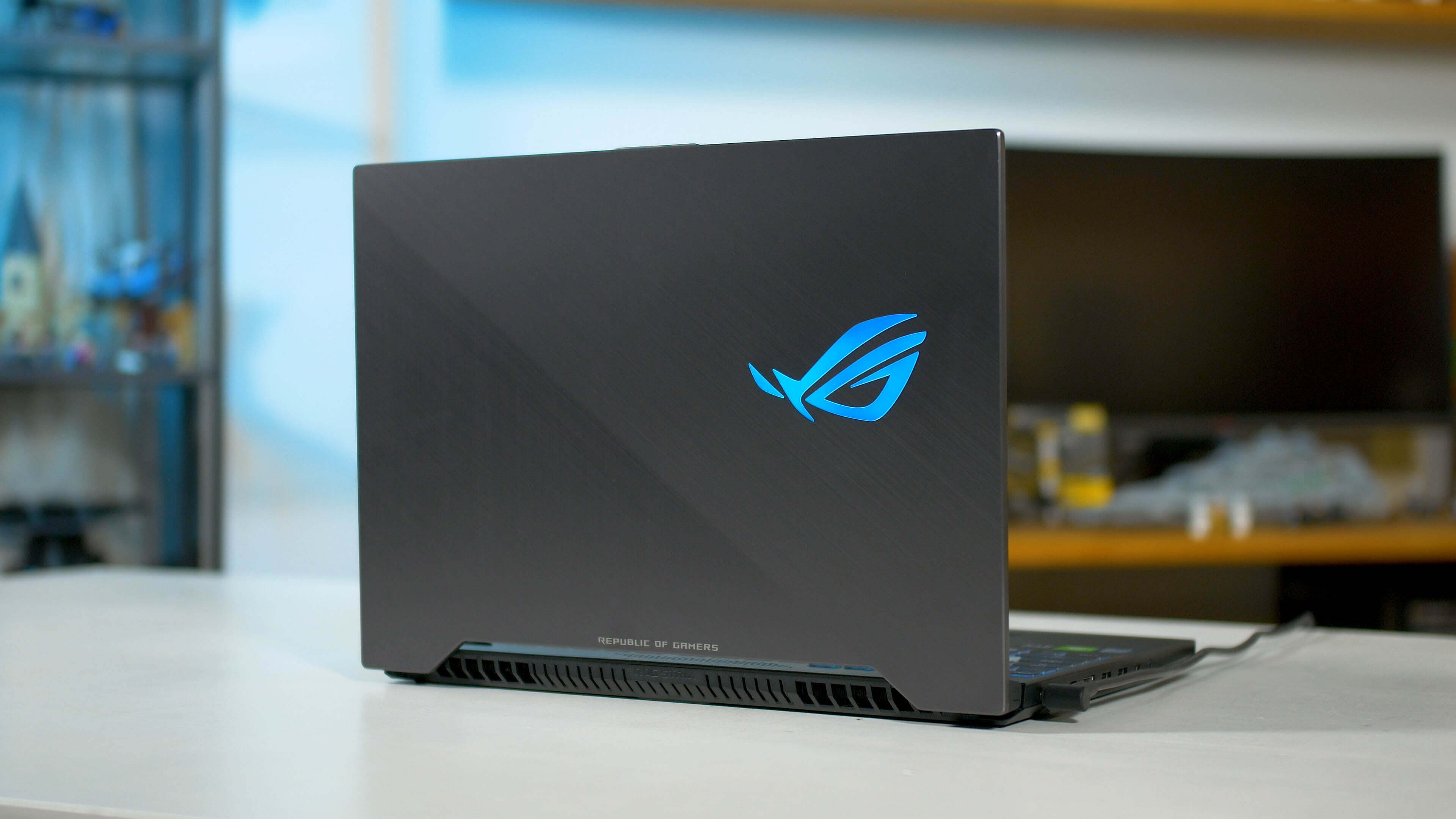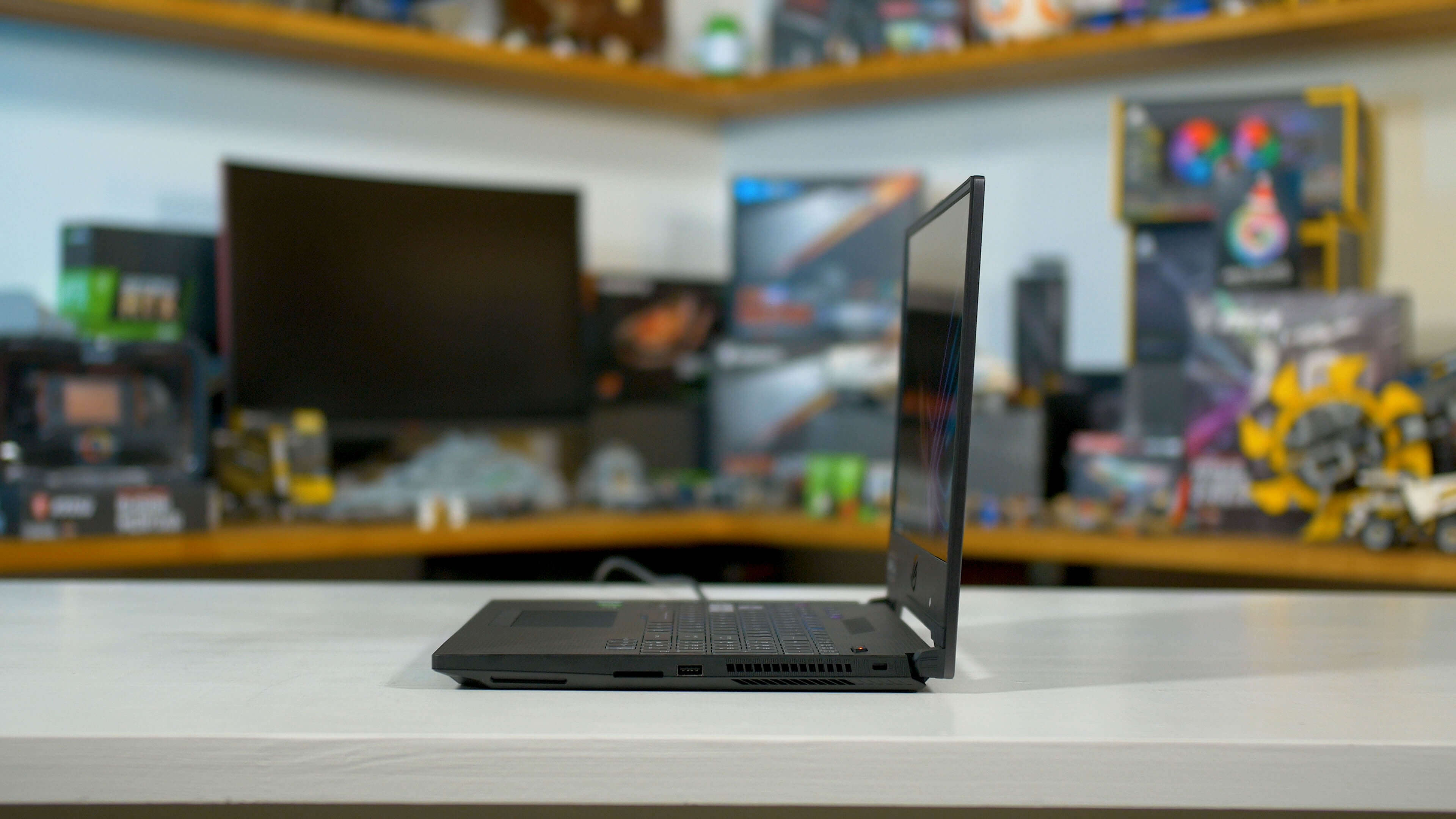Today we're looking at the Asus ROG Strix Scar II GL504GV, a gaming laptop with a long product name but some of the latest hardware inside, including GeForce RTX 2060 graphics. Having already reviewed the RTX 2060 in detail, today we're focusing on what the overall laptop package provides.
Like many other refreshed RTX laptops, there hasn't been a significant change to the design on the Asus ROG Strix or most of the internal hardware. Previously I reviewed the 15-inch Scar II which came with either a GTX 1060 or GTX 1070, while now you can get an RTX 2060 or RTX 2070, albeit at different price points. Our review unit is the GL504GV that packs the RTX 2060 priced at $1,700.
Other hardware is largely unchanged from the previous generation. The same Intel hexa-core Core i7-8750H is used, 16GB of DDR4 memory, and a 15.6-inch 1080p 144Hz IPS display. The primary storage options have been bumped up a tier across the board, so where the base model got a 128GB SSD, that's now up to 256GB, and so on. Our review unit, and the main option available on Newegg and Amazon, comes with a 512GB PCIe SSD.
In terms of design, aside from the brushed aluminium lid, most of the laptop uses plastic, with a soft touch coating applied around the keyboard. This soft touch area has a carbon fiber design with half of it getting a camo print. We'd probably prefer if the camo wasn't there but Asus loves to do this sort of thing.
Yes, there's RGB, too. You get a strip along the front edge of the laptop, plus the off-center Asus ROG logo on the lid, both controllable through Asus' Aura software. The front RGB strip is directly linked to the four zone RGB keyboard backlighting, you don't get per-key RGB here but the basic four zone effect is nice enough. The keyboard has a bit of a spongy tactile response, it's not as clicky as I'd prefer, but travel distance is decent, plus you get a numpad and none of the keys are truncated to fit that in. The trackpad is great and we love the inclusion of two separate click buttons.
Like a lot of gaming laptops these days, a slim bezel around the 15-inch display keeps the laptop's footprint quite compact, although there's still a sizable bezel below the screen. Unfortunately Asus has gone with probably the worst webcam placement possible, offset and low below the display, if the webcam is at all a concern for you, of course.
The chassis is your typical mid-tier option: it's not a slim and light system like the Asus Zephyrus, but it's not a chunky beast like the big boy Asus models. It clocks in at 26mm thick and 5.3 lbs, so it's portable without getting into the thin category that comes at a higher price. The main limitation for portability will be the smaller 62 Wh battery, versus near 100 Wh you get with systems like the Gigabyte Aero 15.
I/O is very solid. Three USB 3.1 type-A ports, two gen 1 and one gen 2, plus a USB 3.2 gen 2 type-C port (there's no Thunderbolt). You also get HDMI 2.0b, miniDisplayPort 1.2, Ethernet, an SD card slot and a 3.5mm audio jack. Internal connectivity comes in the form of an Intel 802.11ac 2x2 Wi-Fi plus Bluetooth 5.0 combo solution.
Before talking about performance, there are a few notes to be made. The first is relating to Asus' software suite, the Armoury Crate. There's a lot of standard stuff in there, but the important thing are the fan profiles: Windows, Silent, Balanced and Turbo, plus a manual mode. For game testing we used the balanced mode, because we couldn't spot any difference in performance between that and Turbo. For productivity apps we used the Turbo mode, it's louder but it does increase the power limit on the CPU which for long workloads like video encoding led to a small performance increase.
And while the Turbo mode is nice, what's not nice is getting a single 16GB DIMM of DDR4-2666 memory. This means the laptop runs a standard 16GB configuration in single-channel only, which leads to lower memory bandwidth than dual-channel laptops, and therefore lower performance. It does leave a DIMM slot free if you want to upgrade to 32GB down the line, but that's come at the cost of out of the box performance.
We won't go into excessive detail about the Core i7-8750H because we've covered it plenty of times in other reviews. It's a popular six-core CPU used in most gaming laptops, and it's the option we'd choose for productivity and gaming workloads without getting into crazy form factors.
Performance
The Asus ROG GL504GV performs roughly on par with a typical Core i7-8750H laptop, but that's down to a few notable differences that both favor and disadvantage the system. Due to the Turbo fan mode, longer workloads tend to throttle less than standard 8750H performance, so we're seeing up to a 10 percent advantage for longer multi-threaded workloads like Handbrake. This laptop can sustain higher clocks for longer. On the flip side, due to having single-channel memory, this laptop gets lower marks in our memory heavy benchmarks. That includes 7-Zip compression, MATLAB and Adobe Photoshop Iris Blur.
As usual here's our comparison between the Core i7-8750H and the last-gen quad-core Core i7-7700HQ. Due to higher clock speeds and more cores, we're looking at over a 50% advantage in some multi-threaded workloads, as well as higher single-thread performance. You won't see this sort of improvement in every workload, but if you're coming from an older quad-core system, the 8750H will be a notable upgrade.


This is the chart for those wondering whether they should buy a larger 15-inch gaming system, or a portable 13-inch ultrabook for their productivity tasks. Generally, the 8750H absolutely smokes a 15W CPU like the Core i7-8565U, delivering more than double the performance in some cases. Throw in proper GPU acceleration and for something like Premiere encodes, a gaming laptop is an order of magnitude faster.

When it comes to gaming, we have tested over a dozen games breaking down how the RTX 2060 performs in this exact system. Check that out in our RTX 2060 (laptop) GPU review. Do note that for that review we loaded up the GL504GV with dual-channel memory, so it will be a tad faster because of that.


On average, the single-channel configuration of this GPU is 13 percent slower than the dual-channel config. That's a significant difference simply from not having that second stick of memory in there. Some games are barely impacted, such as Dirt 4, Watch Dogs 2 and Wolfenstein II. Others like Prey, Assassin's Creed Odyssey and Resident Evil 2 see a 25% performance cut or more as the limited memory bandwidth chokes these games. There is no doubt that dual-channel memory is significantly better for gaming at 1080p.

In terms of an actual FPS impact, in a game like Hitman 2 we're talking about going from a 70 FPS average, down to 50 FPS with single-channel memory (!!!). In Assassin's Creed Odyssey, a 60 FPS experience is cut down to just 45 FPS. It's not a good performance loss.
This also impacts the margins between this RTX 2060 laptop, and other GPUs. Comparing dual-channel to dual-channel, the RTX 2060 is about 28% faster on average than a GTX 1060 6GB. But this single-channel RTX 2060 laptop, compared to a dual-channel GTX 1060 6GB system is only 12% faster, and is actually slower in some games. Then compared to something with a GTX 1070 inside with dual-channel RAM, it loses by more than 20%.
Leaving that empty DIMM slot is a costly trade-off to make it easy for owners to upgrade their RAM in the future. We have to wonder how many people actually open up their system and chuck in that extra stick. Surely the number isn't high enough to justify cutting performance for most others.
Ideally this system should come equipped with two 8GB sticks by default, leading to much better performance from the RTX 2060.
If you are thinking of buying the GL504GV and want to solve this problem, you're looking at spending $100 for a second 16GB DDR4-2666 SO-DIMM stick. Not huge, but something you might want to factor in.
Looking at the cooling solution used in the ROG Strix Scar II, using the balanced fan mode for gaming which delivered the performance you've seen so far, the cooler is pretty loud under load, pushing up near 48 dBA in our testing. It also tends to ramp up and down a fair bit while you're gaming, so sometimes the cooler is quieter than this figure, but to be honest the frequent changes are just as annoying as running at 48 dBA all the time.



However, temperatures are very good, which indicates the balanced mode is perhaps ramping the fan up too high. We recorded a mere 73 degrees on the GPU and 83 degrees on the CPU in an extended Watch Dogs 2 session, which is well below other laptops with similar noise outputs. We reckon some manual fan tuning would go a long way to balancing out temperatures and noise.
At the same time, even when using the Turbo fan profile, the system was much quieter under pure CPU workloads like Handbrake. Clocking in below 40 dBA is a good result. You should still use the Turbo mode though to increase the power limit, even though it doesn't ramp up fan speeds to ridiculous levels in CPU tasks. While gaming the fans really crank up, so I don't recommend it.
For storage, we received a 512GB Kingston M.2 PCIe NVMe SSD. This is a mid-tier performer, not as fast as some of the Samsung or Intel SSDs we've seen in other gaming laptops, but still fast enough to deliver a performance advantage over basic SATA SSDs. Internally there's also a free 2.5-inch drive bay for more storage.


The laptop's display is good. A decent 15.6-inch 1080p IPS with a 144 Hz refresh rate, peak brightness is up around 300 nits, acceptable for a gaming laptop, and it has a contrast ratio of around 1000:1. In terms of color performance, this is an sRGB display, so no fancy wide gamut, but not that you need that for gaming.

Our main concern was with the incorrect white point. Asus is using approximately 7500K rather than the correct 6500K, which gives the display a colder, bluer tone. This leads to average deltaEs between 3.0 and 4.0 which isn't accurate but isn't hugely inaccurate either.
Putting It All Together
The Asus ROG Strix Scar II GL504GV is a fine laptop with a good design, a good trackpad and keyboard, and generous I/O. It's not overly portable, it's not overly chunky. It's got a pretty good display, upgradeability options, and the internal hardware and performance is good, too.
Our only major concern has to do with the single-channel memory out of the box. It doesn't impact productivity workloads heavily, but it does shave ~10% off the gaming performance. It is fixable - a $100 stick of memory added into the second slot immediately gives you that performance back - but we'd rather get that included by default.
In terms of value, the Asus ROG Strix Scar II is somewhat hard to recommend to buy right now when you look at the gaming performance you are getting. But this is not specific to this laptop, but all RTX laptops currently in the market. At $1,700, the Scar II is considerably more expensive than GTX 1060 laptops with a similar CPU, display, storage and other components, which retail for around $1,100 these days. In plain figures, for 63% more cash, you're getting a system that's only 12% faster... or 28% faster if you add in a second stick of RAM.
It's also not competitive with outgoing GTX 1070 laptops. The predecessor to this system, the GL504GS, is only $1,500 in certain stores, including Newegg. That gets you a very similar laptop that is faster for less money. Even if for a limited time while supplies last, RTX laptops at launch do not offer great value.
Laptop prices will inevitably change over the coming months, so those watching this review in the future may be faced with a completely different situation. For now, we simply dislike the idea of a new product not beating last generation's on raw performance nor value. We're honestly not sure who is responsible for setting these prices. Perhaps it's simply Nvidia charging more for the RTX GPU since every other RTX 2060 system is around the same price as the Scar II.
Value discussion aside, Asus has designed the Strix Scar II to be accessible and deliver a decent 1080p gaming experience. You won't find much to set it apart from other generally good gaming laptops at this price point, but it's a good all-round package nonetheless.
